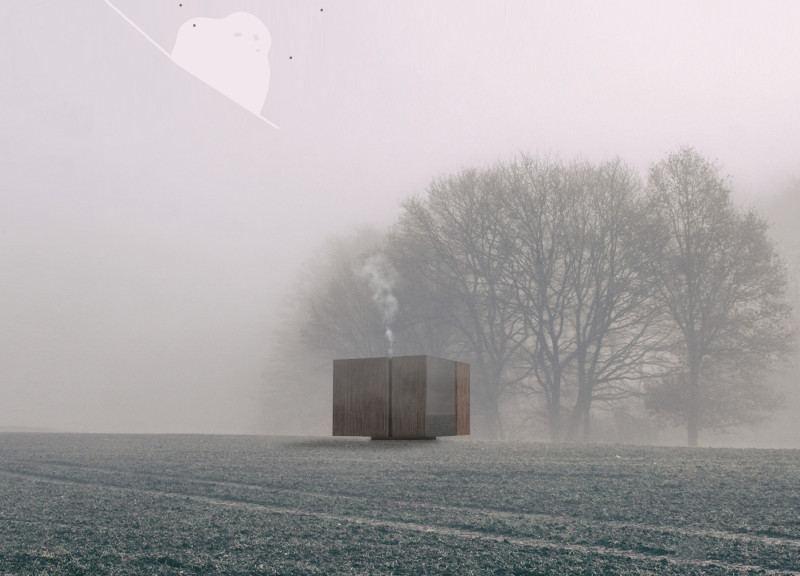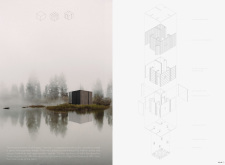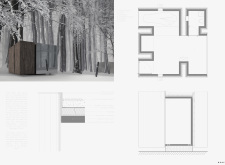5 key facts about this project
The design of the primitive cabins presents a thoughtful response to the surrounding landscape, merging form and function in a meaningful way. Located in a natural setting, these structures reflect themes of permanence and continuity, offering spaces that promote meditation and reflection. The cabins are conceived as eroded masses, appearing as if they have always existed in harmony with their environment. They amplify the natural surroundings, creating a sense of tranquility and connection.
Spatial Organization
Inside, the layout of the cabins is carefully arranged to define various habitable areas, striking a balance between communal and private spaces. This design facilitates different activities while creating a unified atmosphere. Portions of the walls, featuring negative slits, provide transparency that frames views of the outside. This design choice encourages interaction between the interior and exterior, allowing occupants to engage with nature directly.
Material Engagement
The skin of the cabins plays a crucial role in their overall design. It is shaped by environmental factors like rainwater and wind, and reacts to the changing seasons. This living exterior serves as a protective layer while fostering a dynamic relationship with the surrounding elements.
Tactile Experience
Within the cabins, the use of solid wood contributes to a warm and inviting atmosphere, enhancing the experience for those inside. Animal skins serve as dividers, introducing an organic quality to the space. This choice of materials links the design to early human habitation and provides a tactile experience that resonates with the origins of the primitive cabin.
Design Detail
Glass panels are incorporated throughout the design as mirrors, reflecting the environment and reinforcing the aspect of time. This thoughtful integration of materials not only enhances visibility but also signals a continuous relationship with the changing landscape, grounding the cabins firmly in their natural context.





















































